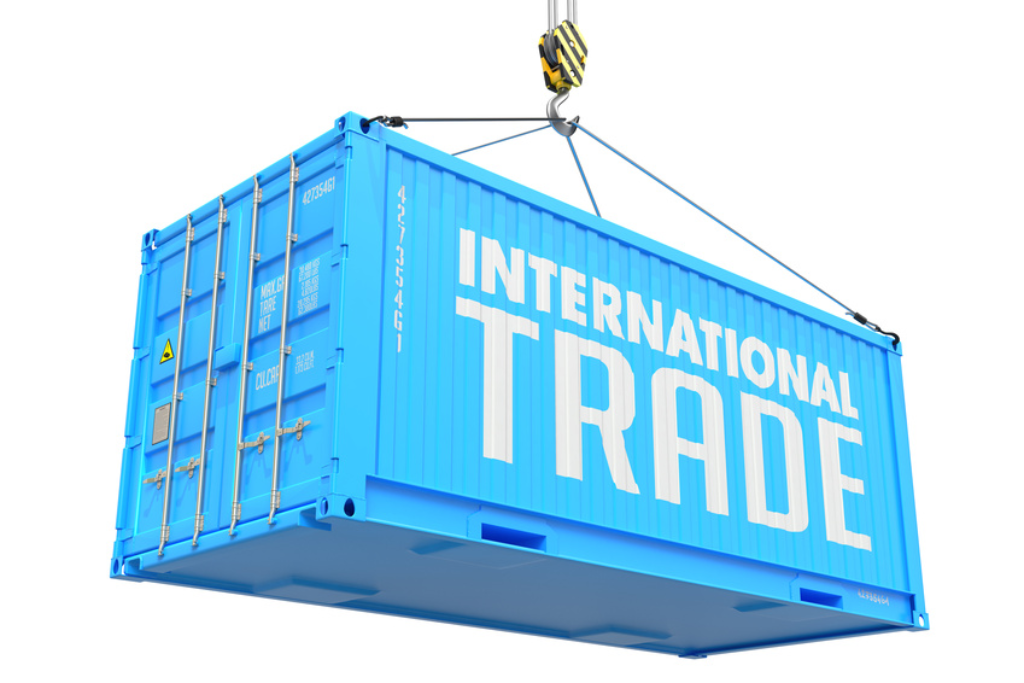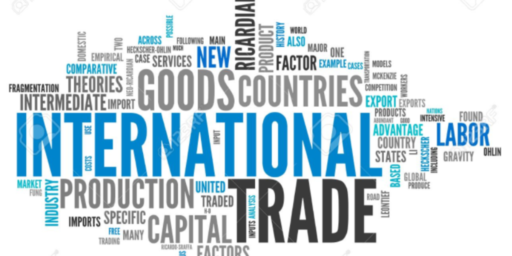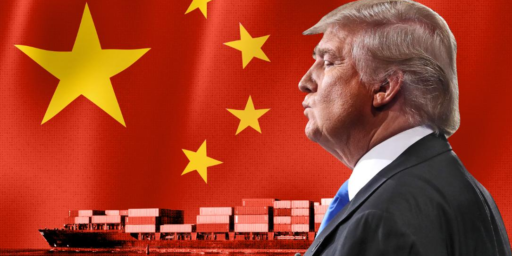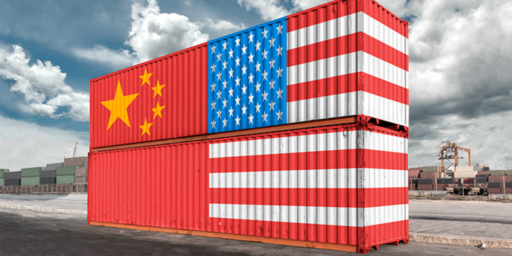The Costs Of Trump’s Irrational Trade War Continue To Add Up
The costs to the American economy of President Trump's ill-advised trade war continue to add up.

President Trump’s trade wars with nations such as China and India, not to mention those with allies such as the European Union, Canada, Mexico, and Japan, are having a negative impact on several American industries, but pig farmers appear to be taking it particularly hard:
China would not normally be able to satisfy its consumer demand for pork, even before the epidemic of African swine fever has cut the nation’s pig population in half. Farmers in the United States would, normally, step in to help fill the gap.
But in retaliation to the tariffs placed on Chinese imports by President Donald Trump, pork going to China from the U.S. now faces a 62 percent levy, essentially making American products too expensive for consumers in China. It’s also leaving exporters frustrated that they cannot take advantage of a prime opportunity to gain long-term access to a lucrative market.
American pig farmers are estimated to be losing out on $1 billion in exports as a result of the continued tensions between the two global economic powers.
Although some U.S. pork products are making their way to China despite the steep duties, in the long term, American producers are haplessly losing out to countries like Brazil and Germany in the global race to feed China’s insatiable taste for pork.
“We certainly want to retain as much of our business as possible [in China], but when you have a tariff that’s five times higher than the standard, that’s a significant headwind,” said Joe Schuele, vice president of communications for the U.S. Meat Export Federation.
The longer trade negotiations with China drag on, the more American farmers will see their window of opportunity close as global competitors claim parts of the Chinese market share.
Earlier this year, pig farmers in the U.S. had some hope that the tensions between Beijing and Washington would be resolved quickly as trade negotiations seemed to be going smoothly. But in May, Trump accused China of backtracking on promises it made during months of talks, resulting in even more tariffs being placed on Chinese goods coming into the U.S.
Right after that announcement, Chinese buyers called off orders of more than 3,000 metric tonnes of U.S. pork — the biggest cancellation in more than a year, according to the U.S. Department of Agriculture.
China’s need for imported pork, though, is not going away. By the most recent official estimates from April, China’s pig population is down by 20 percent — or around 100 million pigs — from a year earlier. The disease has been spreading since summer 2018.
“To put it another way, nothing like this has happened since we’ve had data to record such things,” said Feng Yonghui, chief researcher at Soozhu.com, a website for the pork industry.
China already imports more pork than any other country, with the USDA predicting a 41 percent rise in imports, to around 2.2 million tonnes, as a result of African swine fever.
Europe — the largest source of Chinese imports — has contended with its own African swine fever problems, limiting its ability to ramp up production. China would also need to pay more to lure EU exports away from higher-income neighbors, including Japan and Korea, the USDA said in a recent report.
Given the fact that the Chinese pork industry is being significantly damaged by the ongoing swine flu epidemic, one could argue that part of the blame here lies with China. Pork is a major part of the Chinese diet and plays a huge role in making sure that the nation’s population of more than one billion people is adequately fed. Making pork from a potentially major supplier such as the United States more expensive for consumers isn’t exactly a rational response to a crisis that could potentially cause shortages. As the article quoted above notes, though, China is finding it rather easy to find alternative markets other than the United States for their pork supplies, and Americans are feeling the pinch:
All those factors leave the U.S. in a position that should allow it to dominate the market, said Nick Giordano, vice president of the National Pork Producers Council. From a U.S. farmer’s perspective, this is “the single greatest sales opportunity in our industry’s history,” Giordano said.
“We have been saying for years that if all the barriers to U.S. pork exports in China were eliminated, that pork could single-handedly put a huge dent in the U.S. trade imbalance with China,” he added. “Today, more than ever before, that is the case because African swine fever is ravaging the Chinese hog herd.”
Iowa State University economist Dermot Hayes estimates that the trade dispute with China has cost American pig farmers $8 per animal, or $1 billion in total losses.
Canada and Brazil are already making inroads in filling that void, with the South American nation already improving its market share in China from 4 percent in 2017 to 13 percent in 2018, the USDA reported.
China’s officials have been sending mixed messages about the depth of the crisis, on the one hand saying African swine fever pig deaths and rising pork prices are under control, while on the other stepping up countermeasures to combat a dwindling pig supply.“Our pig-raising industry has already adequately prepared, and we will deal with the effects of African swine fever,” said Cao Derong, president of the China Chamber of Commerce of Import & Export of Foodstuffs, Native Produce & Animal By-Products.
(…)
If China’s tariffs on U.S. goods remain in place, other countries will step in to fill the demand. Li Dali, a merchandiser at Qingdao New Ocean Line, a major importer of frozen meat, estimates that European market share could rise from around half of China’s meat imports to 60 percent or 70 percent within a year.
That means major European meat exporters — including those in Spain, Denmark, the Netherlands and Germany — will have an edge over North American providers like Canada and the U.S.
“In the past, we have relied on two major sources of frozen meat products: Europe and North America. But right now, U.S. imports are already very, very low,” Li said.
Canada suspects that its exports are facing retaliatory actions after it arrested a top Huawei executive at the request of the U.S. For instance, China suspended licenses for two Canadian pork producers in May, saying products had improper labels. This week, a third Canadian firm said its shipments have been blocked.
All of this started, of course, last March when the President announced increased tariffs on steel and aluminum that seemingly came from out of nowhere. This was just the opening shot in the President’s trade war, but its impact was quickly apparent. Just two months after the steel and aluminum tariffs were announced, The Wall Street Journal reported that prices for both foreign and domestic steel and aluminum were increasing and this was having a negative impact on manufacturers that rely on these raw materials for their products. Other reports have indicated that American pork farmers were increasingly nervous about their overseas business with nations like China due to the fact that Beijing was threatening to hit American agriculture with retaliatory tariffs. In Iowa, it was reported that Chinese retaliation for the tariffs could cost soybean farmers $624 million in the first half of 2018 alone, with the prospect of larger losses if the retaliation continues beyond that point.
Soon after that, Trump announced a new round of tariffs on Chinese goods and the Chinese responded immediately with another round of retaliatory tariffs. Finally, and most recently, the Administration announced yet another expansion of the trade war, and of course, the Chinese responded accordingly. .This is how trade wars go, and the fact that there are victims such as the pork industry that the Trump Administration either didn’t take into account or didn’t care about the fact that American farmers would be paying the price for tariffs that had nothing to with them is a good example of the true impact of trade wars. Rather than being, good and easy to win as the President is fond of saying they are ultimately destructive for all parties involved.
President Trump is set to meet with Chinese President Xi Jinping at the G-20 Summit late next week. There is hope by investors and some observers that this meeting will lead to a trade deal of some kind, or that it will at least serve to reset the momentum for negotiations that presently appear to be at something of an impasse. The alternative is that the current trade war continues, and likely expands, with the commensurate damage spreading even further through the economy.





The top ten US pork-producing states:
Iowa – $4.2 billion
Illinois – $1.54 billion
Minnesota – $1.47 billion
North Carolina – $1.46 billion
Indiana – $1.04 billion
Oklahoma – $952.7 million
Missouri – $791 million
Nebraska – $657.5 million
Wisconsin – $605.2 million
Ohio – $542.7 million
Two blue states, eight Trump states. #ETTD.
@michael reynolds: And a fair number of very close states. I expect emergency handouts.
So we had tax cuts that hurt probable and potential Trump supporters in blue states and now we have a stupid tariff war that is hurting probable Trump supporters in red states…I wonder which part of his base he’s going to screw over next…